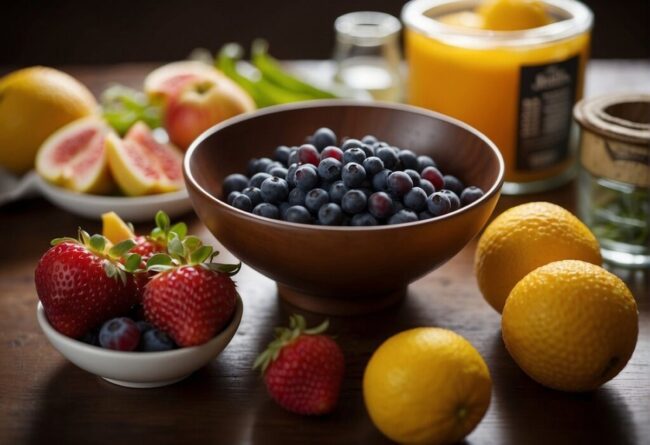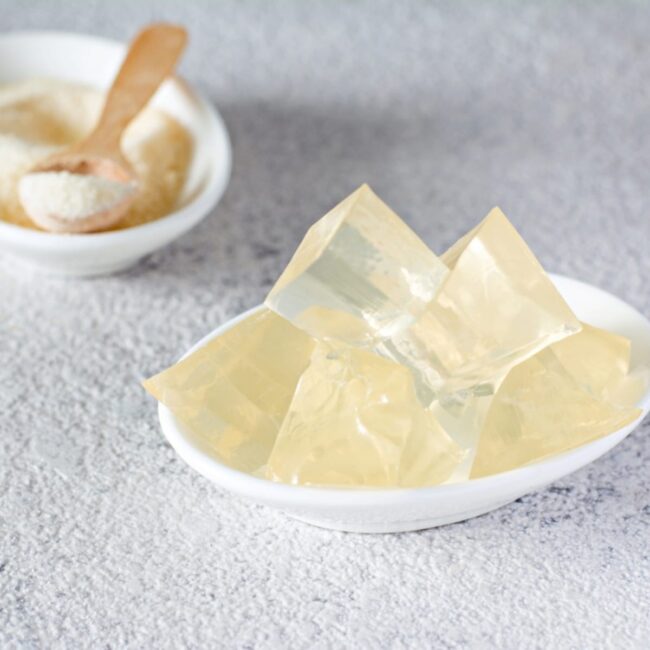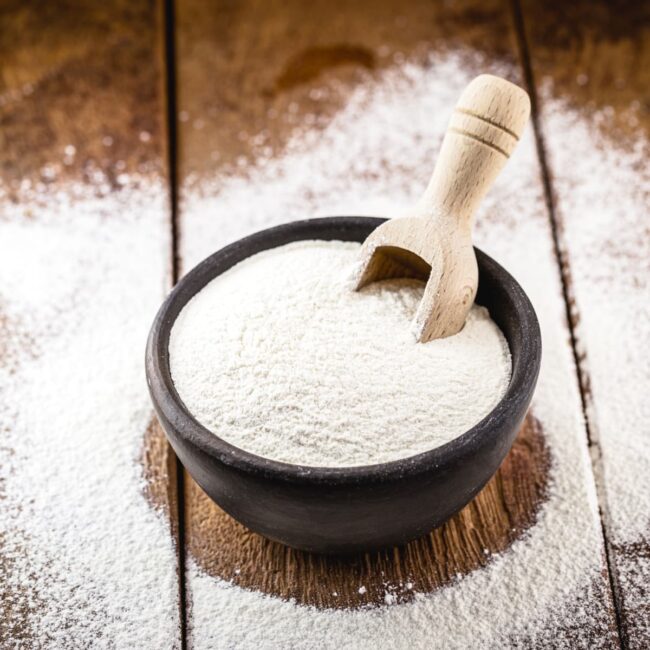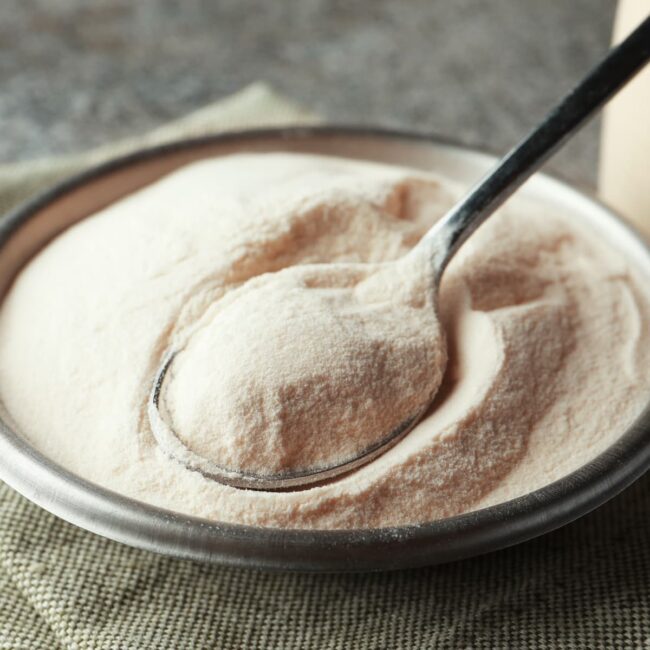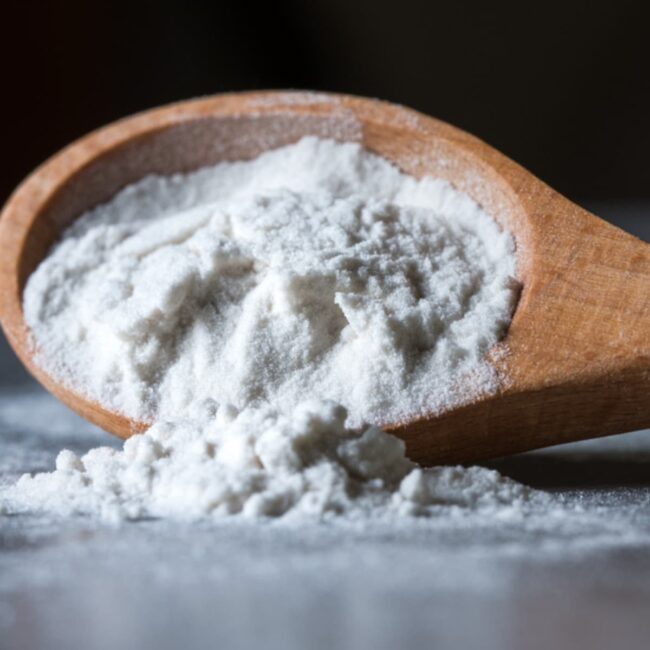5 Affordable Ways to Replace Pectin
Pectin substitutes help secure the consistency of jams and jellies when natural fruit pectin is not available.
An inventive selection of gelling agents holds spreads firm with a vibrant clarity that delights every sense.
Preserves and desserts continue to shine with an appealing texture that speaks to culinary craftsmanship.
What to Know About Pectin
Pectin is a natural fiber found in fruits, often used to thicken jams and jellies. It is a common alternative to gelatin for plant-based diets.
Cooking and Food Storage
Pectin acts as a natural gelling agent, essential for creating the smooth texture of jams and jellies.
When mixed with sugar and acid during cooking, it forms a gel that solidifies upon cooling.
This process not only enhances the spreadability of jams but also preserves fruits by forming a barrier against microbial growth, ensuring longer shelf life.
Jellies benefit from pectin's ability to create a clear set while maintaining fruit juice flavor without any cloudiness.
In preserves, pectin keeps fruit pieces intact in syrupy mixtures, allowing for delightful bites filled with real fruit essence.
Sources of Natural Pectin
Natural pectin from fruits offers a fantastic alternative to commercial powders.
Citrus fruits and tart apples stand out for their high levels of this gelling agent.
Peels and pulp of lemons, oranges, and grapefruits contain significant amounts, making them ideal choices for extraction.
Boiling the peels or fruit allows you to capture the natural pectin effectively while enhancing your recipes with fresh flavors.
Remember that ripeness plays a crucial role; unripe fruits tend to have higher pectin concentrations compared to their ripe counterparts.
Alternatives to Pectin
Pectin serves as a common thickening agent in jams and jellies. Various alternatives exist for those seeking different textures or flavors in their preserves.
Gelatin
Gelatin offers a versatile option in the kitchen, particularly for those who enjoy crafting desserts.
This gelling agent transforms liquids into delightful jellies and provides an appealing texture to a variety of dishes.
For those looking to switch from pectin, using gelatin is straightforward; just one packet can replace a teaspoon of pectin effectively.
Its ability to create firmness makes it popular among bakers and chefs alike.
With gelatin on hand, experimenting with recipes becomes an exciting culinary adventure!
Cornstarch
Cornstarch serves as an excellent vegetarian thickener, providing a smooth and glossy finish to dishes.
This ingredient works effectively in recipes where pectin is typically used, offering similar thickening abilities.
A simple 1:1 substitution makes it easy to switch from pectin without altering the flavor profile of your dish.
Mixing cornstarch with cold water first creates a slurry that ensures even distribution and avoids clumping during cooking.
Whether you're crafting sauces or desserts, this versatile option enhances texture seamlessly while keeping things plant-based.
Agar-Agar
Agar-agar comes from seaweed, offering a fantastic vegan alternative for thickening and stabilizing various dishes.
Its ability to create a firm gel makes it an excellent choice for desserts, jellies, and even savory items.
Dissolving this ingredient in boiling water unlocks its gelling power, providing versatility in the kitchen.
Unlike gelatin that requires refrigeration to set properly, agar-agar reaches its desired consistency at room temperature.
This unique property allows you to experiment freely without worrying about cooling times or special storage conditions.
Chia Seeds
Chia seeds offer a fantastic alternative to pectin, especially for those following a vegan lifestyle.
These tiny powerhouses are packed with fiber, making them beneficial for digestion as well.
When mixed with liquid, they expand and create a delightful gel that can enhance various recipes.
Using one tablespoon of chia seeds instead of each teaspoon of pectin works seamlessly in jams or desserts.
This simple swap not only boosts nutrition but also adds an interesting texture to your dishes.
Arrowroot Powder
Arrowroot powder stands out as a versatile ingredient in your kitchen.
Its gluten-free and vegan nature makes it suitable for various dietary needs.
Utilizing this powder at the end of cooking preserves its thickening strength, ensuring a smooth texture in sauces and desserts.
A simple 2:1 substitution ratio allows you to easily replace pectin without compromising flavor or appearance.
With its clear finish and neutral taste, arrowroot enhances dishes while remaining unobtrusive on the palate.
Choosing the Best Pectin Substitute
The best pectin substitute depends on the recipe, with agar-agar and cornstarch being popular options. Each provides a different texture and consistency.
Feel and Thickness
When selecting a substitute, focus on achieving the right texture and consistency for your dish.
Cornstarch works wonders in jellies and jams, offering a thick, gelatinous feel that mimics pectin.
For pie fillings, tapioca provides a glossy finish alongside an appealing smoothness.
Gelatin serves well in creating firm sets for jellies; however, it isn't vegan-friendly or suitable for vegetarians.
Chia seeds introduce an interesting gel-like quality by absorbing liquid while adding their own distinct texture to recipes.
Acid and Sugar Effects
Understanding the dance between acid and sugar can elevate your jam and jelly-making skills.
Pectin thrives on this interaction, relying on both components for that perfect gel.
When choosing substitutes, increasing sugar may be necessary if they react less to acidity.
Incorporating lemon juice enhances gelling with alternatives like cornstarch or tapioca since acidity plays a vital role in the process.
Mastering these elements leads to deliciously satisfying spreads that are sure to impress anyone who tastes them.
Key Recipe Tips
Substituting pectin in recipes requires careful attention to the specific needs of your dish.
Some jams call for a stronger gel, which gelatin can deliver effectively.
Different substitutes may thicken at varying temperatures or cooking times, so be mindful of those factors during preparation.
The quantity needed might not match what the original recipe specifies for pectin; checking a reliable conversion chart is essential to ensure success.
Understanding these nuances makes all the difference in achieving that perfect consistency you desire in your creations.
Making Jams and Jellies with Substitutes
Substituting pectin in jams and jellies requires adjusting the sugar and acid levels. Ingredients like apples or citrus zest can enhance the natural pectin content.
Jam Recipes Without Pectin
Pectin-free jam opens up a world of creativity in the kitchen.
Using tart green apples to create homemade pectin is an ingenious way to harness natural thickening agents.
Chia seeds serve as a versatile alternative, bringing both nutrition and texture when allowed to rest overnight.
Increasing sugar content enhances thickness, especially with fruits that already possess high pectin levels; this method requires patience during cooking for optimal results.
Finding the right balance between sweetness and tartness not only elevates flavor but also ensures your jam has that perfect spreadable consistency you desire.
Making Jelly Without Pectin
Making jelly without pectin opens up creative avenues in the kitchen.
Agar-agar serves as a fantastic vegan alternative, easily substituting pectin at a 1:1 ratio.
Gelatin offers another option for those who prefer animal-based products, ensuring smooth texture when dissolved correctly.
Checking the acidity of your fruit juice is crucial since some gelling agents thrive in more acidic environments.
Mastering this technique requires precise measurements and timing to achieve that perfect jelly consistency you desire.

